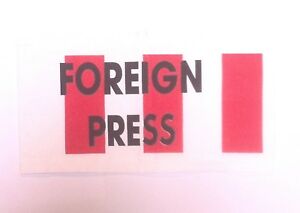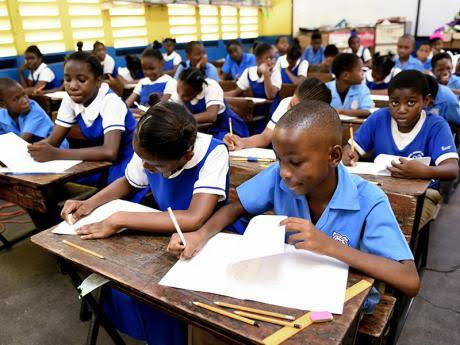
From five years between January 1976 and November 1980 Jamaica was invaded by the foreign press.
Newspapers and news magazines from Canada, the USA, Britain and even Germany got into the act. Big-name journalists like James Reston, Arnaud de Borchgrave, Walter Cronkite, John Chancellor and Don Boehning, were suddenly all over Jamaica. The New York Times, the Wall Street Journal and the Miami Herald along with NBC and ABC news channels joined in with glee. The Agency for Public Information (API, now JIS) had its hands full making arrangements for foreign journalists week after week.
The foreign press invasion was a big part of the destabilisation of the Michael Manley PNP government and it went hand-in-hand with an alarming rise in gun crimes, murders, arson, rape and general terror, as well as empty supermarket shelves, and endless propaganda. But the goal was not immediately apparent to me. It took a random event in the far reaches of Wyoming to bring home to me exactly what was happening and why.
On a tour of the US in late June 1976 I was in Yellowstone National Park, and I picked up a copy of the Rocky Mountain News. To my astonishment it featured an editorial on Jamaica. But, as I read it, the editorial made me angry. It used the Jamaican State of Emergency (declared on June 19, 1976) to badmouth the island and the government.
Yet, the real issue did not seem to be the State of Emergency itself. The editorial spoke scathingly of Jamaican trade unions, and about the government which it somehow managed to depict as a “splinter group.” Yes. The democratically elected government of Jamaica was a splintergroup.
The more I read, the more agitated I became, for the editorial seemed contrived; a set up. I wondered why things Jamaican should be of such keen interest to people in this far-flung part of the US that would give rise to an editorial. Miami? Yes! New York? Washington? Eastern Seaboard? Yes! I could understand that. But Yellowstone National Park? The Rocky Mountains? No!
Something was wrong. American media are notoriously parochial. What interest would they in this far north-western part of the US have in Jamaica? What had they everwritten about Jamaica? The more I thought about it, the more troubled I became, and I eventually bought into the notion that there had to be an orchestrated propaganda campaign in the US against Jamaica and the Michael Manley government, and that this was a part of it.
The campaign was not just in the US. Britain, Canada and even Germany got into the act. In Canada, the Toronto Sun led the way. But on September 25, 1976, a full page of the Toronto Star was lavished on Jamaica. There were only two stories on this page and they were both written by the same person, a man called Arnie Hakala, who later turned out to be a “stringer” and not a regular employee of the Toronto Star. The second story was an attempt to describe how Jamaican people reacted to his presence in the island.
The first story, much larger than the other, was run under the banner headline Cuban Connection Brings Bloodshed to Jamaica. It carried a four-column picture of Edward Seaga and a single-column picture of Manley. It was replete with error and falsification. The Jamaican High Commissioner, former St. George’s College and Jamaica football star Anthony Hill, discovered that the story had also plagiarised three entire paragraphs from an earlier US publication, and sought a meeting with the Star’s Editor Martin Goodman. As Information Counsellor, I accompanied him to the meeting in Toronto.
When the High Commissioner pointed out the plagiarism and produced the publication with the original US text, Goodman looked away, blanched, reddened and then faded to a perplexed purple. Finally, he turned and expressed his regrets. He wanted to know how the Toronto Star could make amends and he offered space for Prime Minister Manley to do an article which he would publish. We declined the offer as being inappropriate.
He then offered to have a Toronto Star reporter cover the election campaign in Jamaica. This we accepted. We had noted that much of the unfair coverage was coming from well-established senior journalists and were pleased when Goodman selected a young Star reporter just out of journalism school for the job. She went down and spent about seven weeks in Jamaica on her own, free to cover the election as she saw it. We gave her no direction. The result could not be better. Her stories came from all over the island and after the election, the Star published an editorial saying “America might not like the results of the Jamaican election but Canada should come to the support of the Manley government.”
Goodman ended our meeting saying he would publish our letter along with a picture of Anthony but wanted our approval to make some changes. The changes? We could slam the Toronto Star as hard as we wished, he said, but we should not mention the reporter by name!
This was, to me, a strange request. No mention of the reporter’s name? But as it did not appear to be central to our main purpose, we did not query his request and the letter was revised accordingly and sent back to him. It was the first time I had seen a letter published on the editorial page of the Toronto Star with an accompanying two-column photograph of the writer.
This is the letter the Toronto Star published on October 16, 1976:
Criticism of Jamaica Untrue, Official Claims
“The Star’s September 25th story on Jamaica reached me in Kingston at the close of nearly six weeks on the island. I was astonished that you could draw such different conclusions.
“The bald assertion that the ‘Cuban connection brings bloodshed to Jamaica’ is not supported by any evidence in the article. What we find is innuendo and untruth. The government has continued the practice of the previous government (now the Opposition) of maintaining friendly ties with Cuba. We have strengthened these ties through bilateral economic and cultural exchanges, and the government intends to continue doing so.
“While political violence explains part of the current disorders in Kingston (some 10 square miles of Jamaica’s 4,500) there was also an element of criminal activity. Against the background of escalating violence between January and June of this year, the government proclaimed a state of emergency on June 19. This continues today, following strictly the constitutional requirements of a parliamentary democracy.
“The “alarming influx of M-16 rifles”, which is implied as the source of the “bloodshed”, is questionable. You do not document the rumours that there are M-16 rifles in Jamaica; nor is there to be found in the article any relationship between the violence in Jamaica and the allegation that M-16 rifles are in Jamaica “through the Cuban connection.”
“In any event, M-16 rifles are manufactured in the US.
“There were other distortions. The article said ‘violence is increasing.’ In fact, there has been a more than 50 per cent decline. It said that ‘in a small district in Jamaica 144 shops are closed and 126 remain open;’ in fact few districts in Jamaica have appreciably more than 20 shops. This suggests a pre-conceived notion to portray Jamaica in an unfavourable light.”
And here are extracts from the letter to the Star in its original form that effected so many changes of colour as the blood drained from Martin Goodman’s face.
“The Toronto Star has quoted Eddie Seaga as saying there is a district in Jamaica ‘where 144 small shops have closed leaving 126 open.’ If the Star or Mr. Hakala can produce this Jamaican district with 270 small shops then we suggest honorary membership in a magician’s club. If the story is meant to be a dressed up interview of the Opposition Leader, then the Star should say so, declare its bias and attribute the words used in the headline to the person interviewed.
“Up to now no one has established in that story the existence of a ‘Cuban connection.’ Worse, Arnie Hakala has failed to show how this ‘connection’ has brought bloodshed to Jamaica. Neither he nor the Star has explained how the Cuban connection with Canada has failed to bring bloodshed here although Canada has always maintained diplomatic and trading relations with Cuba, and the Canadian Prime Minister went to Cuba on a State Visit only this year.
“Your story indicates that Arnie Hakala was in Jamaica while Parliament debated the State of Emergency last week. Perhaps you can tell us then why he failed to quote the following crime statistics given during that debate:
“Murder: A peak of 42 cases between April 26, 1976 and May 23, 1976. Reduced to 11 between August 16 and September 12, 1976
“Shooting: An average of 56 cases per month from March 29, 1976 to June 20, 1976, before the State of Emergency was declared. Down to an average of 32 from June 21 to September 12, 1976
“Arson: A high of ten cases between March 29 and May 25, 1976. No cases since the State of Emergency was declared on June 19 and up to September 12, 1976
“Robbery with Firearms: A peak of 180 cases between March 29, 1976, and May 26, 1976. Reduced to 66 cases August 16 to September 12, 1976
“At best, Arnie Hakala’s article can be summed up as destructive tourist journalism with a super-sensational headline; unworthy of a newspaper with the traditions of the Star.”
The bad press peaked in Canada in September that year. The Toronto Star devoted over 800 inches of space to Jamaica in that month alone, most of it negative. The Montreal Gazette, the Montreal Star and the Ottawa Citizen all joined in along with The Islander, a small Caribbean community paper in Toronto, while the Toronto Sun led the way.
In the US it was somewhere between a tsunami and a pandemic.
The year had begun with a bang. It was the year of the famous State of Emergency, and it was the year of the December 15 General Election. Seaga had wrested the leadership of the JLP from Hugh Shearer late 1974 and was now bringing the fight to Prime Minister Michael Manley’s PNP.
Now, on January 5, terror descended on parts of Trench Town and Jones Town. On that day all hell broke loose. Fire-bombing, murder and arson lit up the skies in a section of working-class Kingston called Rose Town, a short bicycle ride from the Trench Town that Reggae superstar Bob Marley made famous. The January 6 red headline in the Jamaica Daily News was: TRENCH TOWN BURNS.
The fire engines that rushed to the scene were either disabled by tacks and broken glass bottles which punctured their tyres, or turned back by menacing men with high-powered weapons. The policemen who tried to restore order told the reporters of the Jamaica Daily News that they were outgunned, as they had never even seen some of these huge weapons before.
For several months, gun-terror continued on a scale previously unknown in Jamaica. It was quickly observed that the terror that January was timed to capture the attention of the American press, several representatives of which were in Jamaica to cover a meeting of the International Monetary Fund. Gun murders and terror continue until this day.
Ewart Walters is a journalist, author and retired diplomat.



